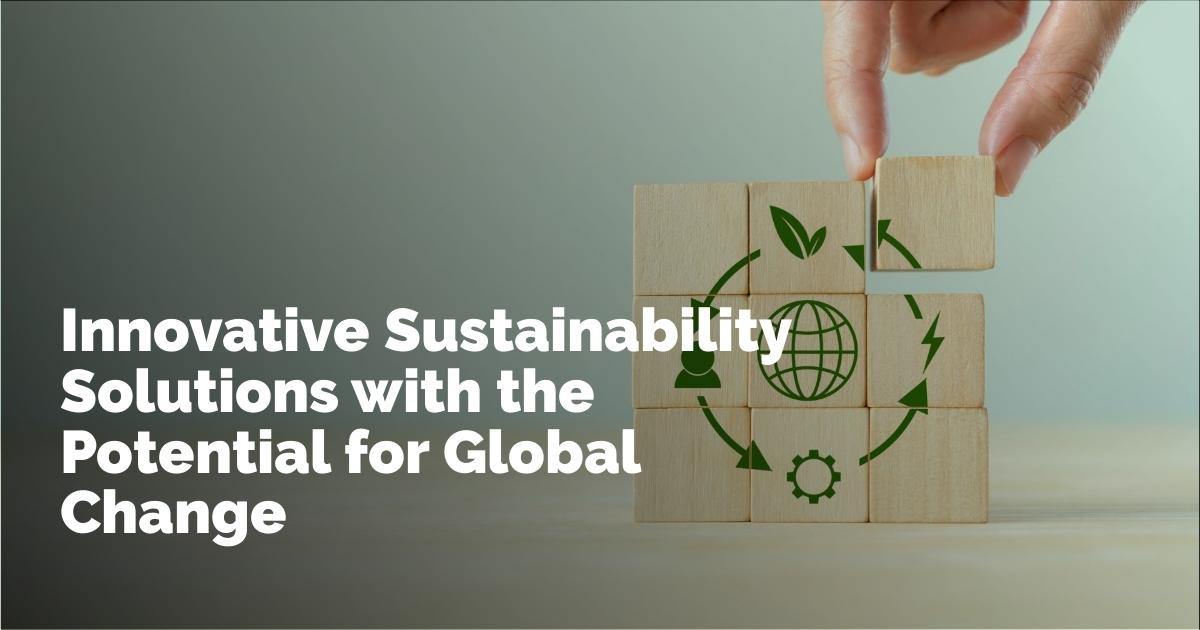Sustainability Innovations: Paving the Pathway to a Resilient Future
Sustainability is an all-encompassing concept that extends beyond environmental concerns, integrating social and economic challenges to forge a pathway toward a resilient future. As global warming, resource depletion, and ecosystem fragility heighten the urgency of sustainability discussions, notable innovations have surfaced as potential game-changers. Analysts from Impact Newswire have closely examined transformative sustainability solutions that could redefine our approach to these pressing issues.
Cutting through the complexity of sustainable practices, the article delves into three pivotal innovations: green hydrogen as a zero-carbon feedstock and fuel, carbon removal at scale, and the increasingly influential circular economy. Let's explore how each of these solutions could significantly impact the future of our planet.
Green Hydrogen: Catalyzing Decarbonization
Hydrogen production through renewable electricity provides a promising avenue for decarbonizing sectors that are notoriously difficult to electrify. This shift holds the potential to enable significant reductions in emissions within industries and transportation. Despite the optimism surrounding green hydrogen, Diana Rasner of Cleantech Group emphasizes the challenges in achieving true zero-emission hydrogen production.
The hurdles to efficient hydrogen energy production haven't taken away from its potential. Rasner notes the importance of strategizing and focusing green hydrogen efforts on niches with immediate demand, such as distributed ammonia production for agricultural fertilizers and e-fuel projects for aviation and maritime sectors. Such targeted applications could nurture initial growth and expedite progress in reducing carbon footprints.
Researcher and sustainability professor James Demastus underlines the importance of zero-carbon feedstock and fuel, drawing attention to innovative biological production methods. These methods leverage engineered feedstock to maximize carbon absorption, enhance land fertility, and foster natural regeneration. This area, still in experimental stages, offers an exciting glimpse into regenerative sustainability by not only reducing carbon emissions but actively removing it from the environment.
Demastus also highlights the agriculture sector's innovation potential, suggesting that techniques like cover cropping and minimal tillage could revolutionize sustainable farming practices—paving a path toward strong sustainability.
Carbon Removal: A Crucial Strategy for Net-Zero Targets
Realizing net-zero emission targets necessitates an aggressive approach toward carbon removal, particularly through advance methods like Direct Air Capture (DAC) and specialized storage. As current carbon budgets face overshoot risks due to existing emissions, enhancing carbon removal capabilities forms a cornerstone of climate strategy.
While DAC technology promises a significant impact on managing atmospheric CO₂, Buff López from Cleantech Group cautions about its current limitations, noting the technology's high costs and immature sorbent technology. Despite challenges in commercial viability, early adopters are exploring options, signaling the need for accelerated development to fully harness DAC’s potential.
Whether DAC technology reaches commercial feasibility by the desired timeline remains contingent on overcoming these operational barriers. The pursuit of innovation in carbon removal at scale is indispensable for achieving a sustainable future where emissions are effectively offset or reversed.
The Circular Economy: Reducing Resource Dependence
The circular economy stands as a beacon of promise, advocating for systemic changes that prioritize keeping materials in use through repair, recycling, and service models. By reducing the dependency on raw material consumption, the circular economy underscores a vision of sustainable efficiencies.
Parker Bovée from Cleantech Group highlights recent strides in circular economy adaptations, including battery recycling advancements. Globally, regions like Europe, China, and South Korea are spearheading mandates for highly recyclable battery components. Their shared goals align with reducing carbon footprints while promoting domestic battery mineral production.
Commentators note, however, that these management models, often driven by financial and image concerns, lean toward 'weak' sustainability. For circular economy practices to evolve into 'strong' sustainability paradigms, they require strategic alignment with regenerative efforts that replenish resources more than they consume.
James Demastus proposes a harmonious collaboration that extends beyond competition—engaging supply chains, consumers, and industry competitors in bioregional efforts that make resource sharing practical and beneficial.
The exploration of permaculture farming and bioregional resource-sharing models in agricultural arrangements furthers the innovative momentum. Such advances offer hope for a future where circular economy principles are deeply woven into the fabric of sustainable agriculture.
Food for Thought Leadership: Rethinking Flavor in a Cultural Tapestry
As a closing reflection, Valda Coryat of McCormick reveals insights into how flavors transcend borders increasingly, reshaping the culinary palette globally. By drawing on cultural influences and segmenting markets based on 'flavor personality,' companies like McCormick envision a future where curiosity and cultural richness drive innovation.
While this consideration of flavor leadership is tangential to sustainability, it echoes the overarching theme of innovation—challenging the status quo to embrace diverse perspectives and practices. Ultimately, every facet of societal operations, from fuel to food, holds the potential to become an agent of sustainable change.
출처 : Original Source

